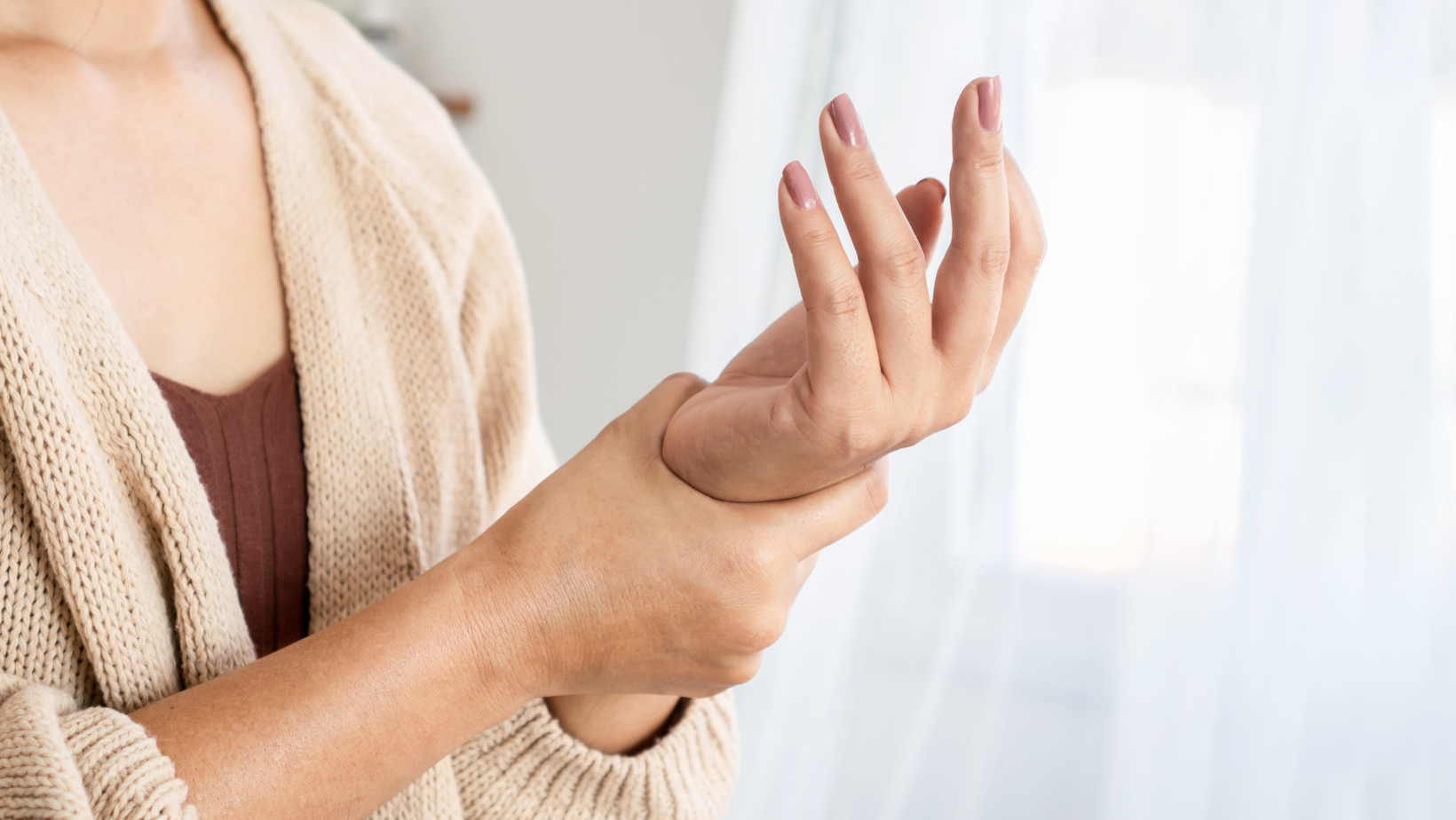Category
Hand pain is a common complaint that can significantly impact daily activities and quality of life.

Have any questions?
If you have any questions, feel free to contact us at [email protected]. A member of our support team will help you shortly.
Share this blog
Fatigue
Energy
Stress
Sleep
Hand pain is a common complaint that can significantly impact daily activities and quality of life. From overuse injuries to underlying medical conditions, understanding the various causes, recognizing symptoms, and exploring effective relief strategies are essential for maintaining optimal hand function. This article will delve into the diverse factors contributing to hand pain, examining common causes and providing insights into finding relief.
Various forms of arthritis, including osteoarthritis and rheumatoid arthritis, can cause inflammation in the joints of the hands, leading to pain, stiffness, and reduced mobility.
Compression of the median nerve in the wrist can result in carpal tunnel syndrome, causing pain, tingling, and numbness in the hands.
Inflammation of the tendons, often due to overuse or repetitive motions, can cause pain and discomfort in the hands.
A condition where one of the fingers or the thumb becomes stuck in a bent position, causing pain and difficulty moving the affected digit.
Noncancerous lumps often develop along wrists' and hands' tendons or joints, causing pain and discomfort.
A condition where the tissues in the palm thicken and tighten over time, leading to fingers being pulled towards the palm, resulting in pain and reduced hand function.
Direct trauma, such as fractures or injuries to the hand, can cause acute pain and may require immediate medical attention.
A condition that affects blood flow to specific body parts, often triggered by cold or stress, leads to pain and numbness in the hands.
Conditions like diabetes can cause peripheral neuropathy, resulting in pain, tingling, or numbness in the hands.
A type of arthritis caused by the buildup of uric acid in the joints can lead to sudden, severe pain in the hands and fingers.
Pain is concentrated in specific areas of the hand, often in the joints or along the fingers.
Reduced flexibility and stiffness in the fingers or wrists, making it challenging to perform everyday tasks.
Inflammation and swelling, especially around the joints or areas affected by arthritis.
Sensations of tingling or numbness, particularly in conditions like carpal tunnel syndrome or peripheral neuropathy.
Difficulty gripping objects or a noticeable reduction in grip strength.
Conditions like Raynaud's disease may cause changes in skin color, with hands turning white or blue in response to cold or stress.
There are visible lumps or bumps, as seen in ganglion cysts or other growths.
Rest and immobilization can help alleviate pain and promote healing for acute injuries or conditions like tendonitis.
Applying heat or cold packs to the affected area can help reduce inflammation and relieve pain.
Applying heat or cold packs to the affected area can help reduce inflammation and relieve pain.
Over-the-counter pain medications, such as ibuprofen or acetaminophen, can help manage pain and reduce inflammation.
Performing gentle hand exercises and stretches can improve flexibility, strengthen muscles, and reduce stiffness.
Splints or braces may be recommended to support the hand and limit movement, especially in conditions like carpal tunnel syndrome.
A physical therapist can provide targeted exercises and techniques to address specific hand conditions and improve overall hand function.
In cases of severe arthritis, joint injections with corticosteroids may be recommended to reduce inflammation and alleviate pain.
For certain conditions like carpal tunnel syndrome or severe arthritis, surgical interventions may be considered to alleviate pain and improve hand function.
Adjusting daily activities, ergonomics, and hand usage can help prevent further strain and promote healing.
If hand pain persists, worsens, or is associated with other concerning symptoms, seeking medical consultation is crucial for accurate diagnosis and appropriate treatment.
Hand pain can stem from various causes, and effective relief strategies depend on understanding the underlying factors contributing to the discomfort. While many cases can be managed with self-care measures, persistent or severe hand pain warrants professional evaluation to identify and address the root cause. By adopting preventive measures, engaging in appropriate exercises, and seeking medical attention, individuals can effectively manage hand pain, enhance hand function, and improve overall quality of life.